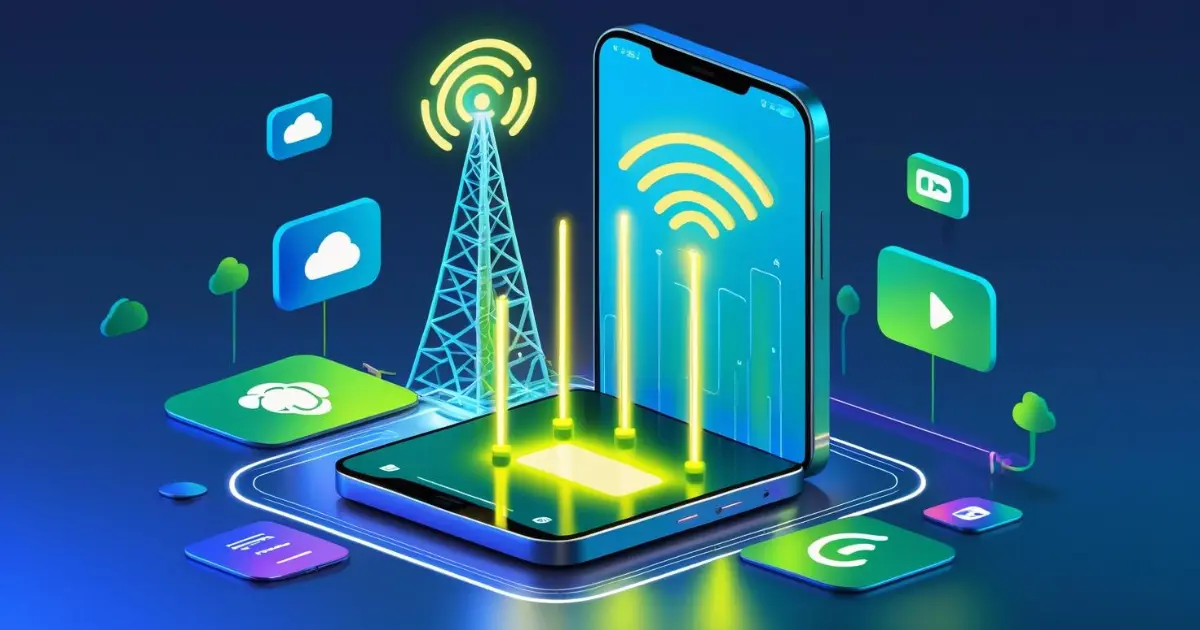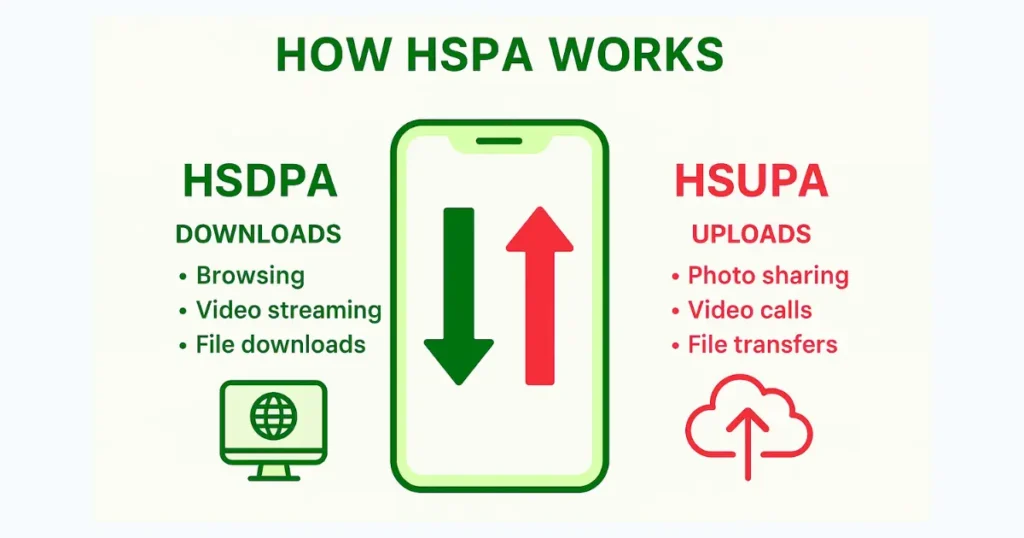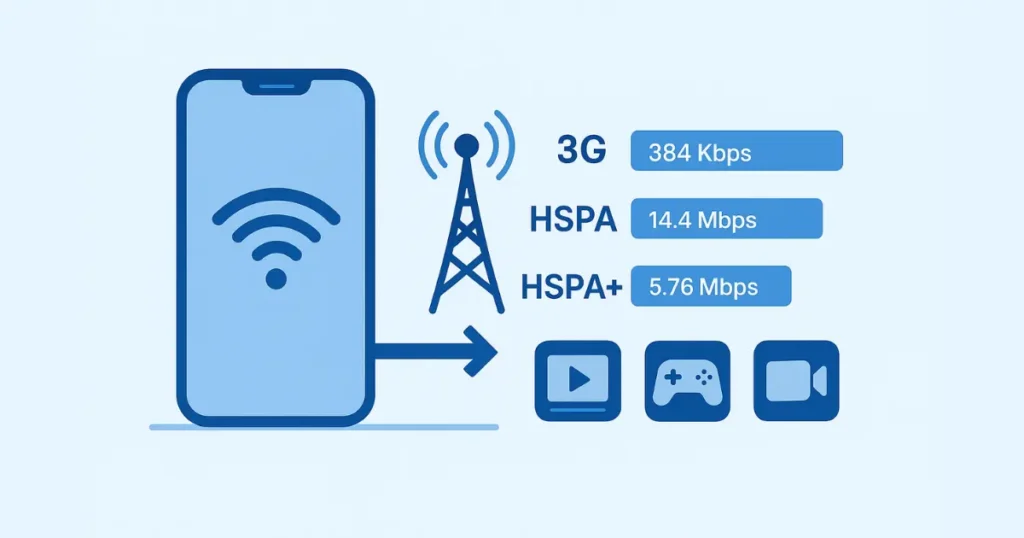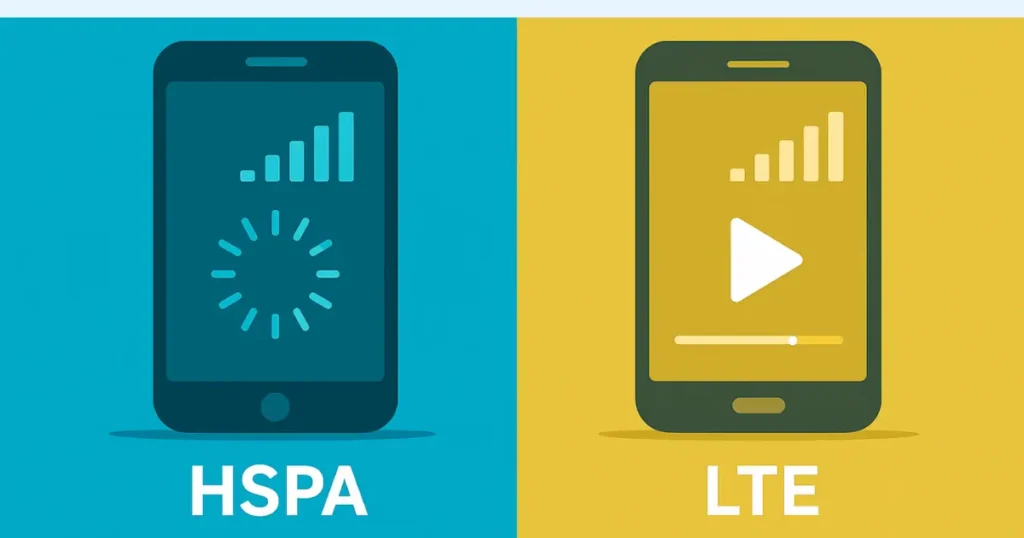
Often referred to as 3.5G, HSPA (High Speed Packet Access) is an advanced form of mobile broadband technology. Think of it as a bridge between 3G and 4G—it gave people faster downloads, smoother uploads, and an overall better mobile internet experience.
It wasn’t quite 4G, but compared to standard 3G, the jump felt huge. Tasks like loading websites, streaming videos, and sending emails suddenly became much quicker and more reliable.
With faster response times and smoother data transfer, HSPA made mobile internet a reliable option for people across the globe.
ADVERTISEMENT
HSPA is built on two key technologies:
HSDPA (High Speed Downlink Packet Access) and HSUPA (High Speed Uplink Packet Access).

HSDPA (High Speed Downlink Packet Access) focuses on downloads. It improves the speed of tasks like opening web pages, streaming YouTube videos, or downloading files, making the overall browsing experience much smoother.
HSUPA (High Speed Uplink Packet Access) is designed to enhance uploads. With it, sending photos, making video calls, or sharing files online becomes faster and more reliable, reducing delays during communication.
ADVERTISEMENT
One of the biggest selling points was speed. Early versions of HSPA could reach 14.4 Mbps downloads and 5.76 Mbps uploads—a big leap from basic 3G. Later, HSPA+ pushed those numbers even higher, up to 42 Mbps under ideal conditions.

It wasn’t just about raw speed, though. Latency (the time it takes for data to travel back and forth) also improved, making things like online gaming, video calling, and VoIP smoother.
And importantly, HSPA was backward compatible. This meant you could still use the same 3G network infrastructure, making it cost-effective for operators and widely accessible for users.
ADVERTISEMENT
For everyday people, HSPA changed how they used their phones. Browsing became less frustrating, video streaming became possible, and apps that needed internet suddenly worked much better.
Businesses benefited too—mobile workers could connect to email servers, join video calls, and use VPNs without always relying on Wi-Fi.
And for many, HSPA-powered devices could even double as portable hotspots, letting laptops and other gadgets share the connection on the go.
HSPA was introduced as an upgrade to the UMTS (Universal Mobile Telecommunications System), which itself was built on GSM networks. Rather than starting from scratch, engineers added improvements on top of what already existed.
This made life easier for mobile operators, since they didn’t need to invest in brand new infrastructure. A software upgrade and some hardware tweaks were often enough to roll it out.
The result? A faster mobile internet technology that spread quickly and became one of the most widely adopted standards before LTE came along.
ADVERTISEMENT
Of course, technology never stands still. While HSPA was impressive, LTE (Long Term Evolution) quickly took the spotlight. LTE offered much higher speeds, lower latency, and the ability to handle the growing demand for data-heavy apps.

Still, HSPA shouldn’t be forgotten. It was the stepping stone that made the jump from 3G to 4G smoother, giving users a taste of what mobile broadband could really do.
In fact, many regions relied on HSPA for years before LTE became widespread, and even today it remains a fallback network in some areas.
HSPA was more than just a technical upgrade—it was the breakthrough that brought mobile broadband to life. It encouraged people to use the internet on their phones for more than simple emails and texts, opening the door to streaming, apps, and richer online experiences.
By delivering faster speeds and smoother performance, HSPA prepared the world for the arrival of 4G and eventually 5G. Even though it’s no longer the leading technology, its role in shaping modern mobile communication remains undeniable.
ADVERTISEMENT
HSPA stands for High Speed Packet Access. It is a mobile communication technology that enhances 3G networks by providing faster download and upload speeds.
No, HSPA is often called 3.5G because it’s faster than standard 3G but not as advanced as 4G LTE. It served as an important bridge between the two generations of mobile networks.
Basic 3G offered speeds of up to 384 Kbps, while early HSPA reached up to 14.4 Mbps downloads and 5.76 Mbps uploads. Later, HSPA+ boosted speeds even further, up to 42 Mbps under ideal conditions.
HSDPA (High Speed Downlink Packet Access) handles downloads like streaming videos and browsing.
HSUPA (High Speed Uplink Packet Access) improves uploads such as photo sharing, file transfers, and video calls.
Yes, but its role has declined with the rise of 4G LTE and 5G. However, in many regions, HSPA remains a backup for mobile data, especially where newer networks are not yet fully deployed.
ADVERTISEMENT